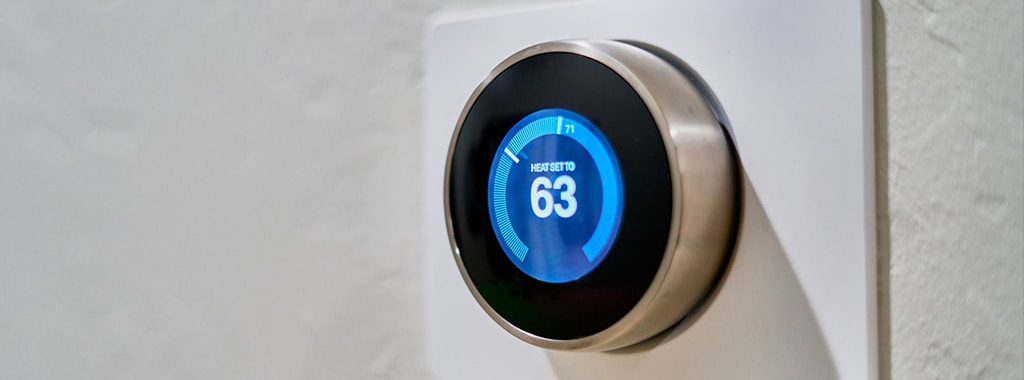Finding the right HVAC contractor for your home can feel like a confusing, frustrating process. How do you know where to look? Once you find a specialist, how can you be sure they’re professional and experienced?
Thankfully, you’ve come to the right place.
One of the quickest ways to determine an HVAC contractor’s credibility is to ask him or her the following questions.
Where Can I Find Your Reviews and References?
If they have none, time to walk away. Today’s relevant and most trustworthy HVAC companies have an online presence because they know the value of meeting customer expectations online. If you’re doing research on your own, you should be able to search for the company by name in Google, and their business listing, along with all relevant information (contact information, website, any posted ratings and reviews), should appear.
If there’s no evidence of satisfied customer reviews, it might be a good idea to continue your search for an HVAC contractor.
What Services Do You Provide?
Ideally, your HVAC contractor will be well-versed in a wide range of techniques and services. If they are experts in only one facet of HVAC, working with their agency may result in frustration and inflated service costs, since other tasks will take up unnecessary paid time, or will require another contractor to step in and help.
Which Certifications Have Your Technicians Earned?
In a perfect world, you’d like to have someone working with the internal wiring of your home who actually knows what they’re doing, right? We thought so. Asking about a company’s requirements for training and licensure for their employees is a completely appropriate thing to do, and may save you a disaster in both home and wallet.
It goes without saying: you’re much more likely to get top-notch service from HVAC technicians who are certified and trained.
Additionally, you might ask a follow-up question: “How long have you been in business?”
This will allow you to gauge the expertise and longevity of experience your contractor is bringing to the table. Most likely, if you’re seeking out an HVAC contractor, your home might have been on the block for a few years (or decades). You want to be sure your technician is familiar with the fragile components of an older home, as well as proficient in understanding new HVAC systems in newer builds. Experience is vital.
What Maintenance Programs Do You Offer?
Every home is unique, so every home’s HVAC needs will be different. Knowing what your HVAC company protects, guarantees, and maintains is an essential part of creating a partnership. Ask about the company’s agreements and policies, and whether they’re flexible depending on the home’s needs. Ensure everything is in the open before signing on the dotted line.
Essentially, this question could be phrased as, “What happens after installation?” Does your HVAC technician leave you hanging high and dry, or will they commit to tune-ups and maintenance if need be?
How Can I Be Sure Your Recommendations Will Address My Home’s Air Needs?
This is not your average “business check-in” question. Too many HVAC contracting companies take short cuts and aren’t privy to the latest technologies and developments in the world of heating, ventilation, and air conditioning. The bolder you are able to be with your question asking of potential HVAC contractors, the more clarity you will have regarding their fit for your needs.
HVAC companies should be methodical, thoughtful, and intentional in their approach to giving quotes, assessing home air problems, and fixing/replacing any dysfunctional mechanisms. If you sense any theme of being rushed, abrupt, or insincere in diagnosing your HVAC issues and concerns, it may be a sign to keep searching.
What is Included in Your Service Quote?
This question seems like a silly one, but it is a surefire way to guarantee that there won’t be any hidden fees that arise later; after you’ve signed and services are in progress. Specifically, be warned that in the installation of a new HVAC system, the quote may not ensure that the old parts of the previous system also be replaced (fittings, valves, pipes, connectors, etc.). Ask your HVAC contractor about their policies regarding this.
Good Guys Home Services: The Answer to Your Questions
Locally owned and operated Good Guys Home Services is the most trusted source for all your HVAC needs in the Fort Collins, CO area. We take our commitment to excellence very seriously and accomplish this by providing customers with services that surpass their expectations.
Our goal is to give you complete confidence in hiring our team of licensed technicians. As a family-owned business, we know how important it is for you to feel comfortable in your home. Having professional HVAC services allows you to have the amenities you need, such as a temperature-controlled home environment. With 15 years of experience, our certified technicians have the knowledge and tools necessary to identify and complete any furnace repair or installation.
When you call Good Guys Home Services, you’ll receive prompt service and a transparent, straightforward quote. Maintain a comfortable temperature and healthy air quality by reaching out to our team.
In fact, we believe that a home should offer a high level of comfort, which is why we offer pre-season maintenance, complete system upgrades, 24-hour emergency services, and quick and honest communication. Good Guys is reliable, credible, and professional. The search is over; reach out today!





